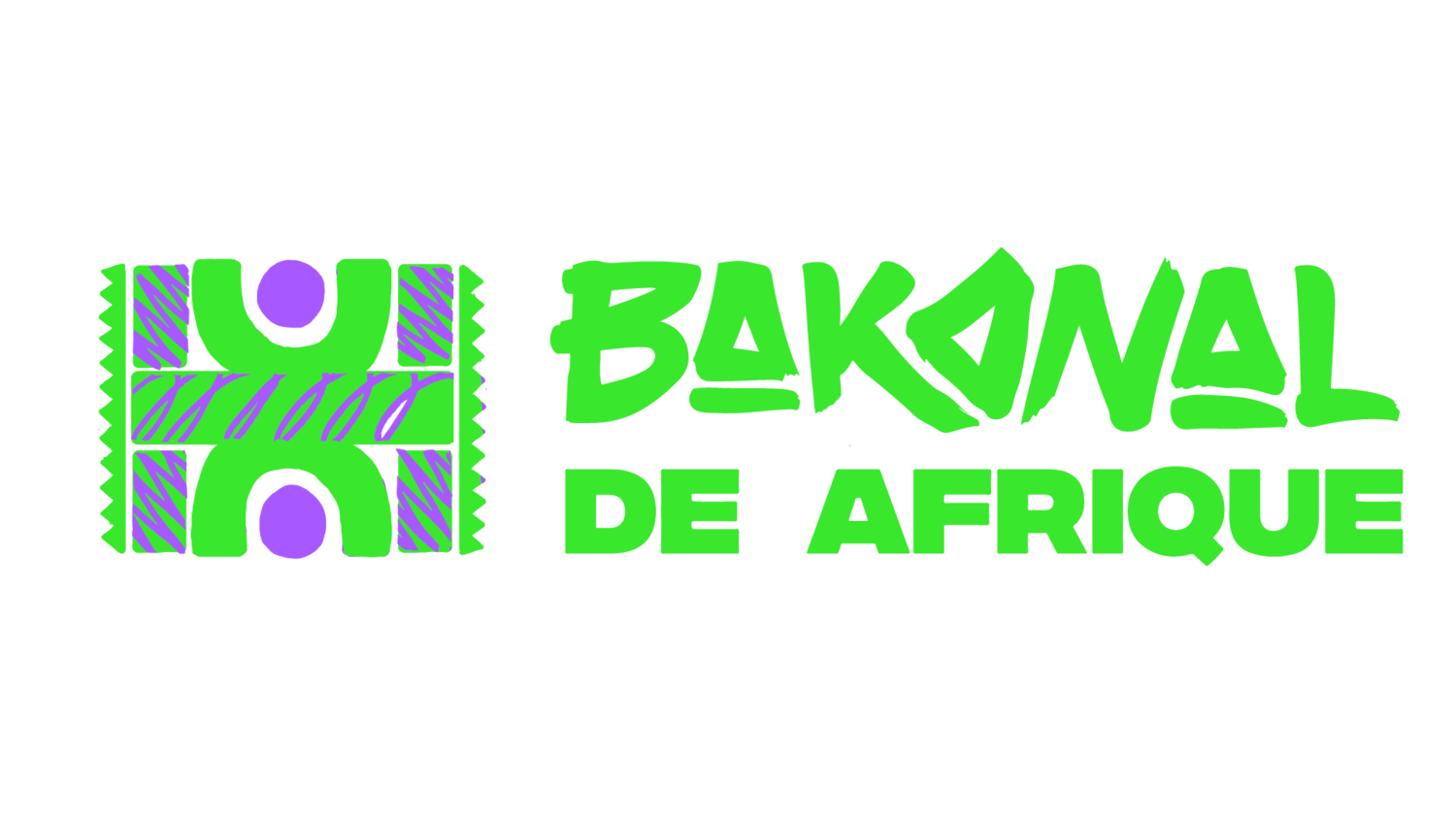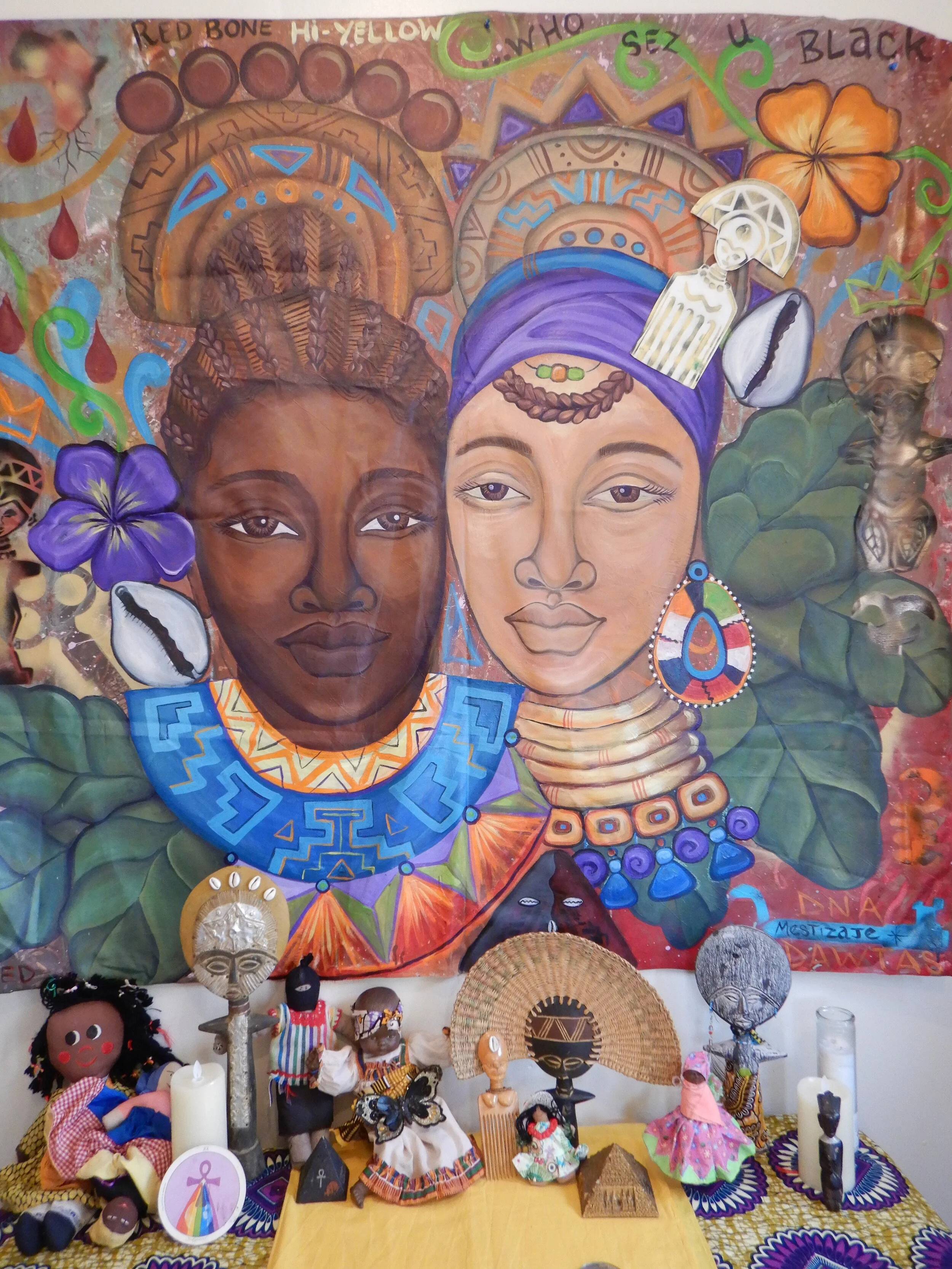FAYAWO
Adetona Omokanye | Lagos | Nigeria
look until something moves, and then click next

Suleiman poses for a picture on his arrival to the park just after he delivered client goods across the border.
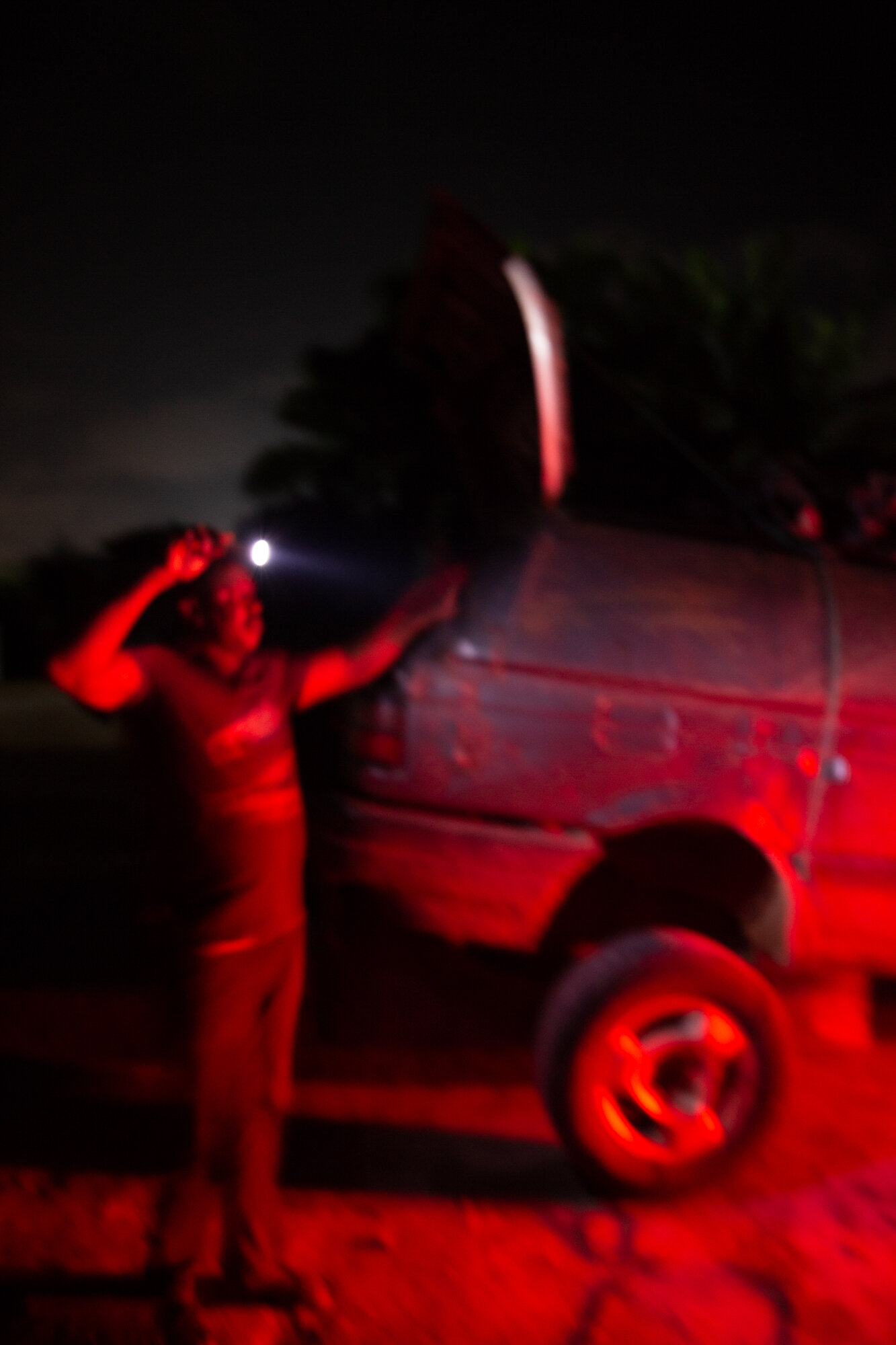
A man signals driver that bring goods to the park at night with a torch light. Most of the time drivers that bring good to this park usually miss their way

There is a unique way of arranging goods in the car. Drivers are the ones that are mostly involve in putting goods in the car because of the technicalities it required
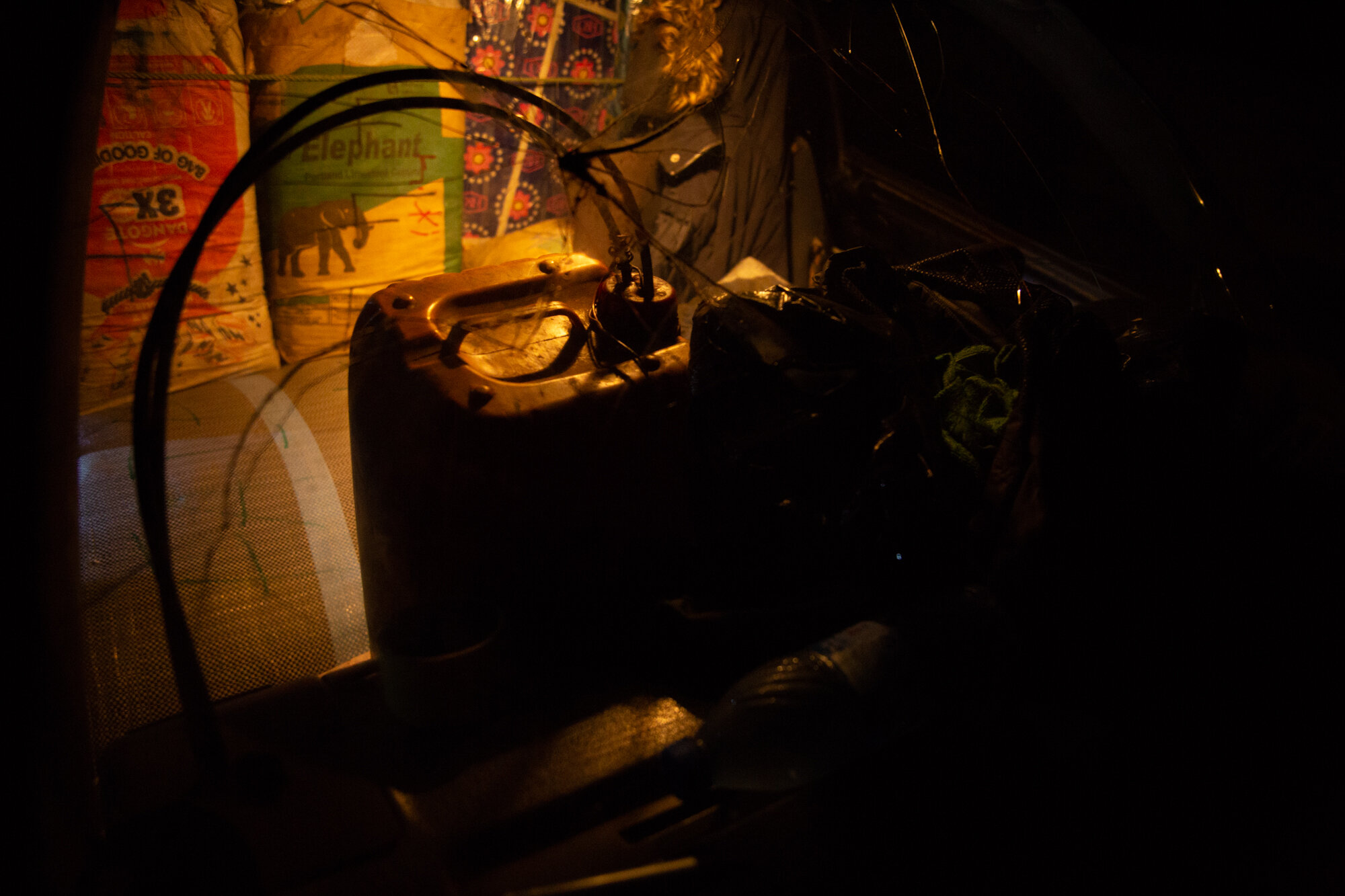
A keg used as a make shift fuel tank. This idea is mostly common amongst drivers, because the tanks are removed intentionally to create more room for load
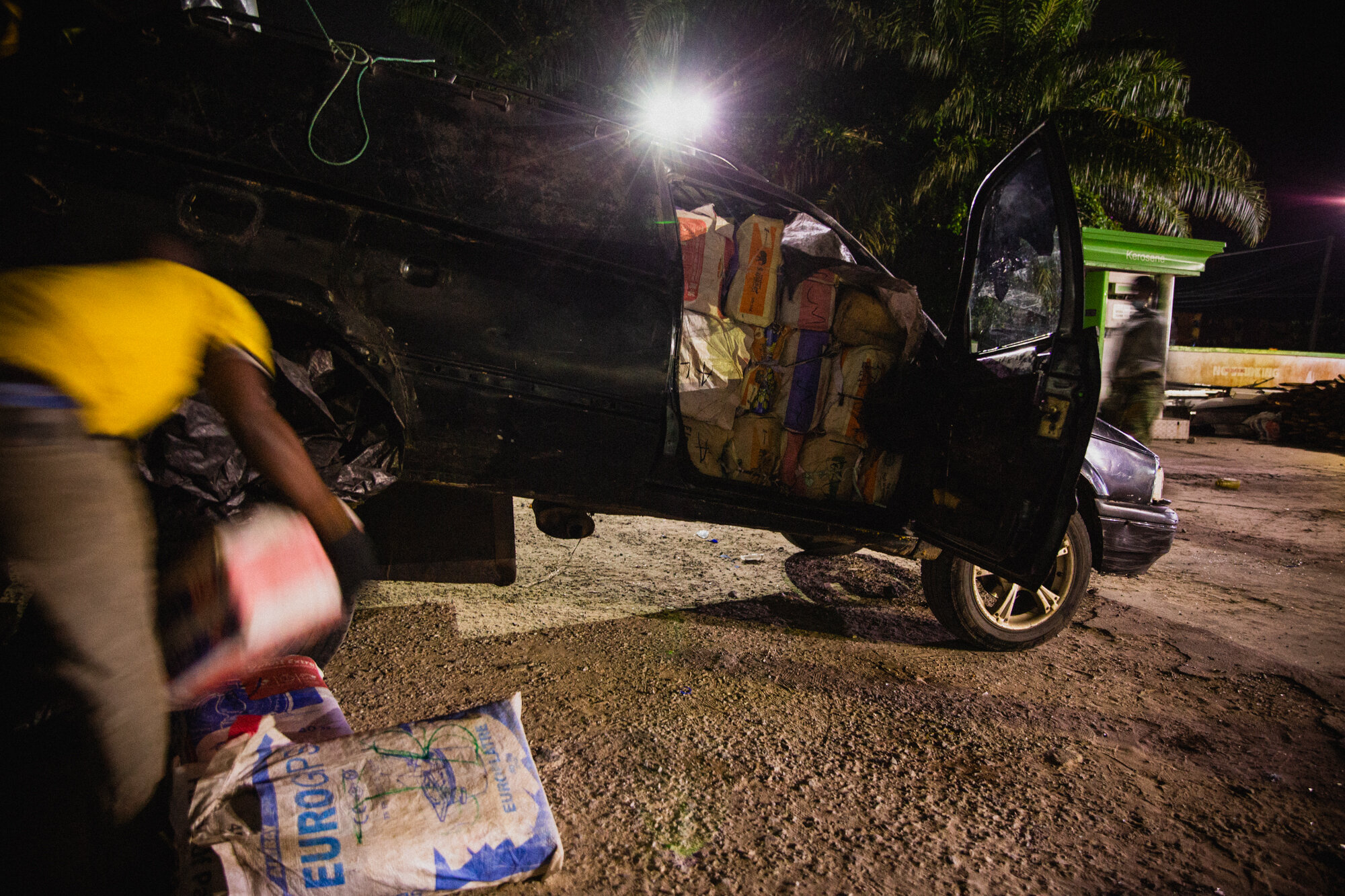
A man removing excess load from the ground after the car is fully loaded
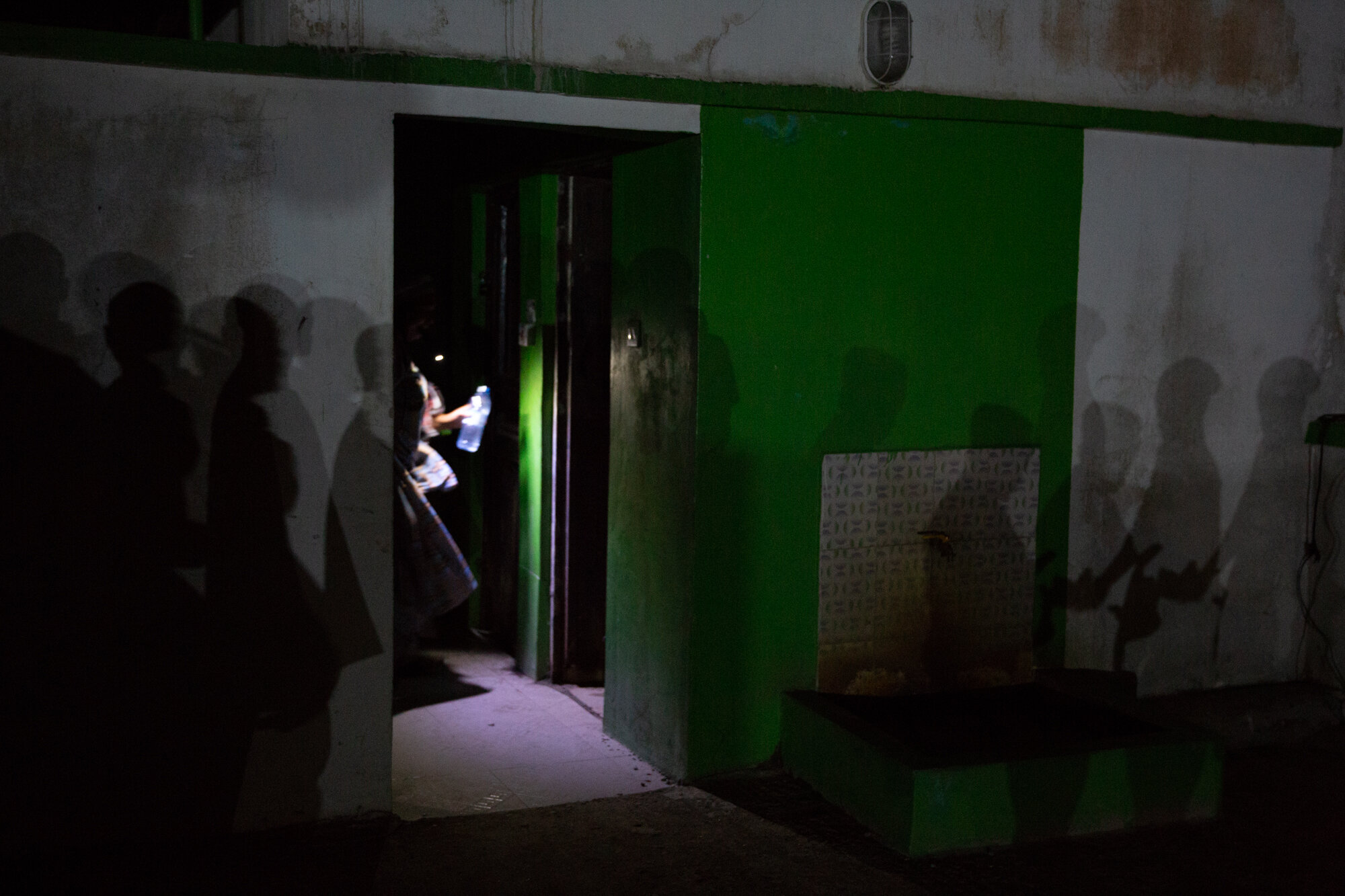
Group of people cluster together to negotiate pricing with the driver at the park
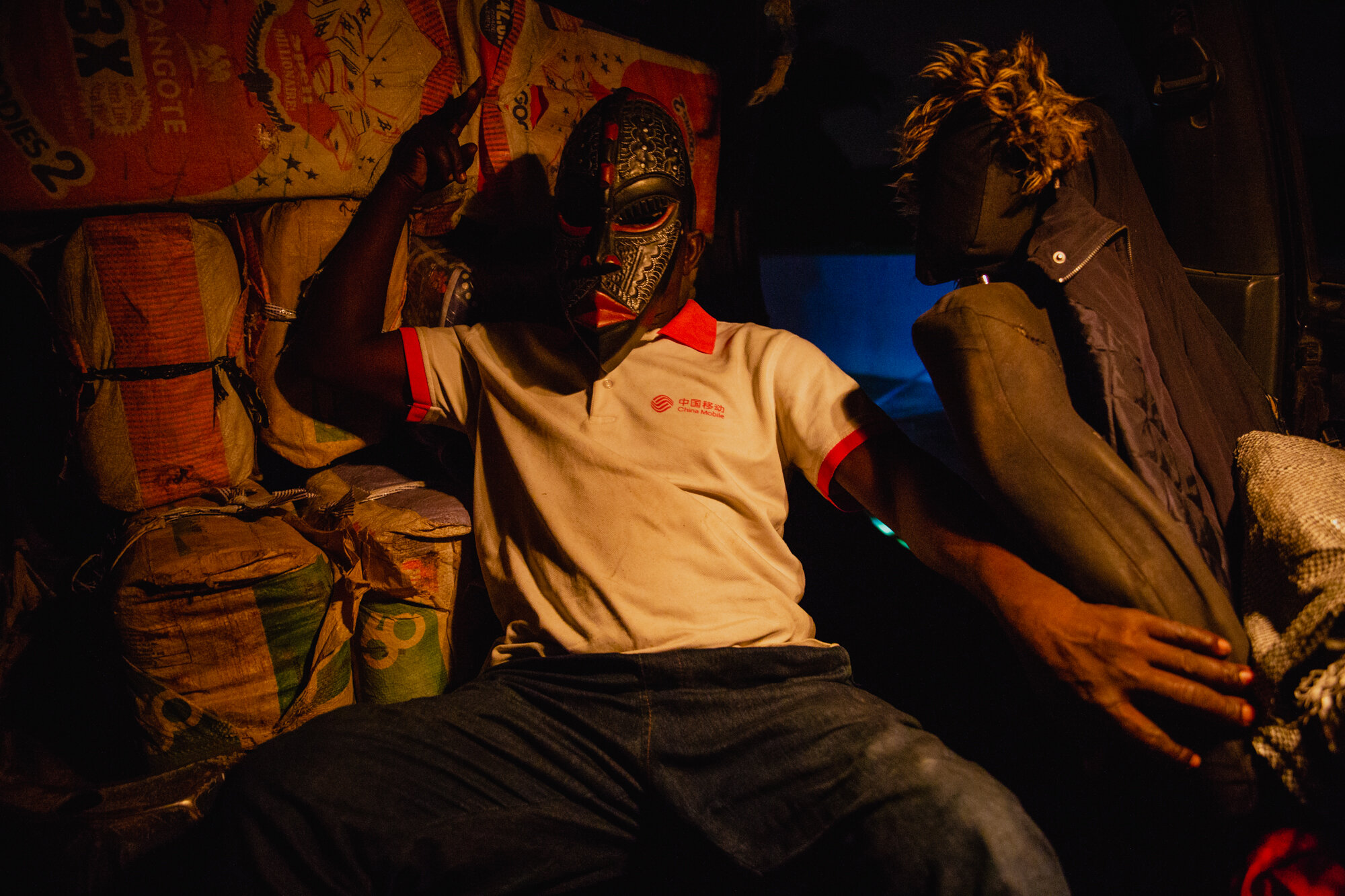
Suleiman poses for a picture just after he packed the good to be delivered across the border
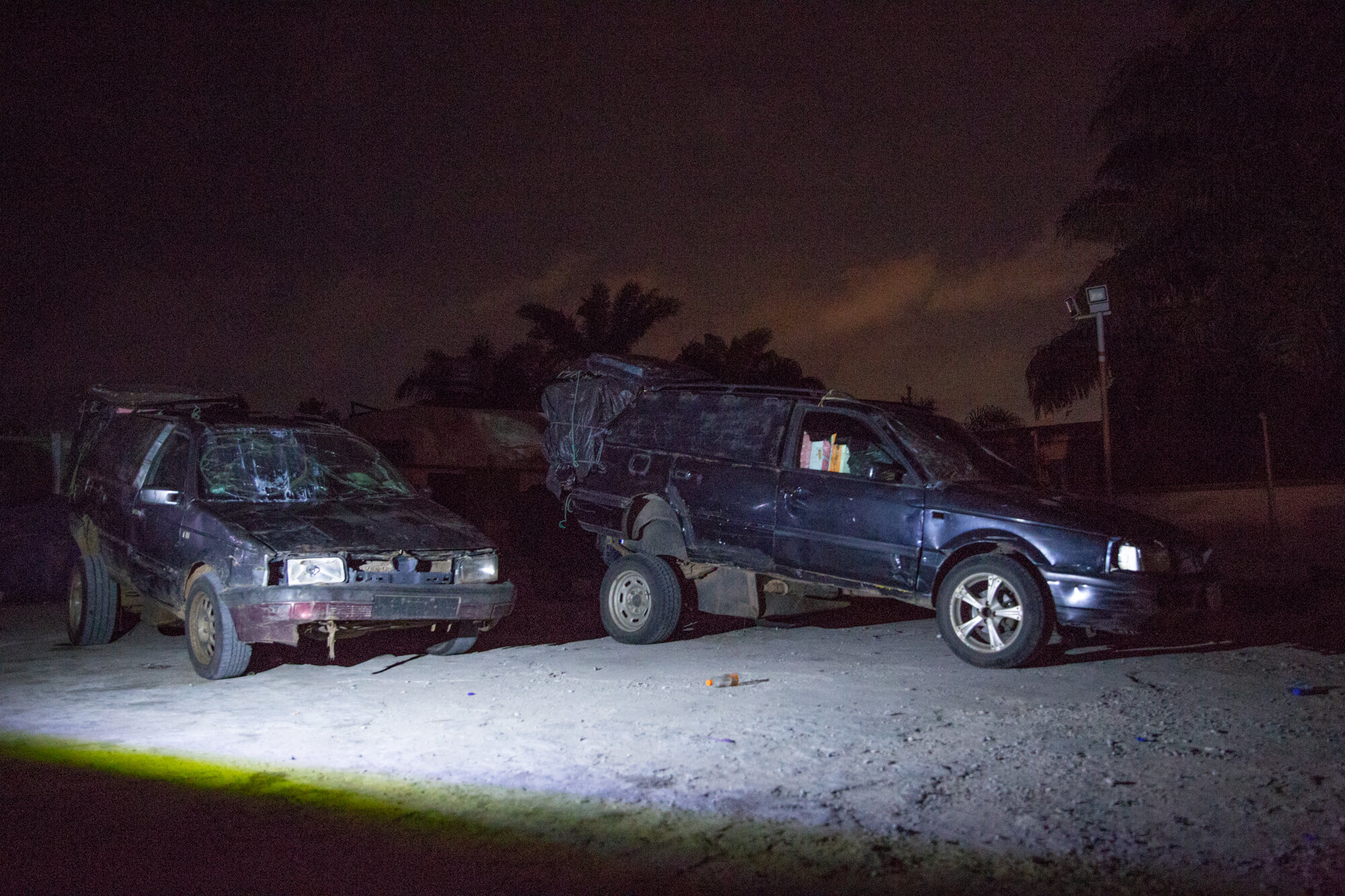
Fully loaded cars ready to take off from the park
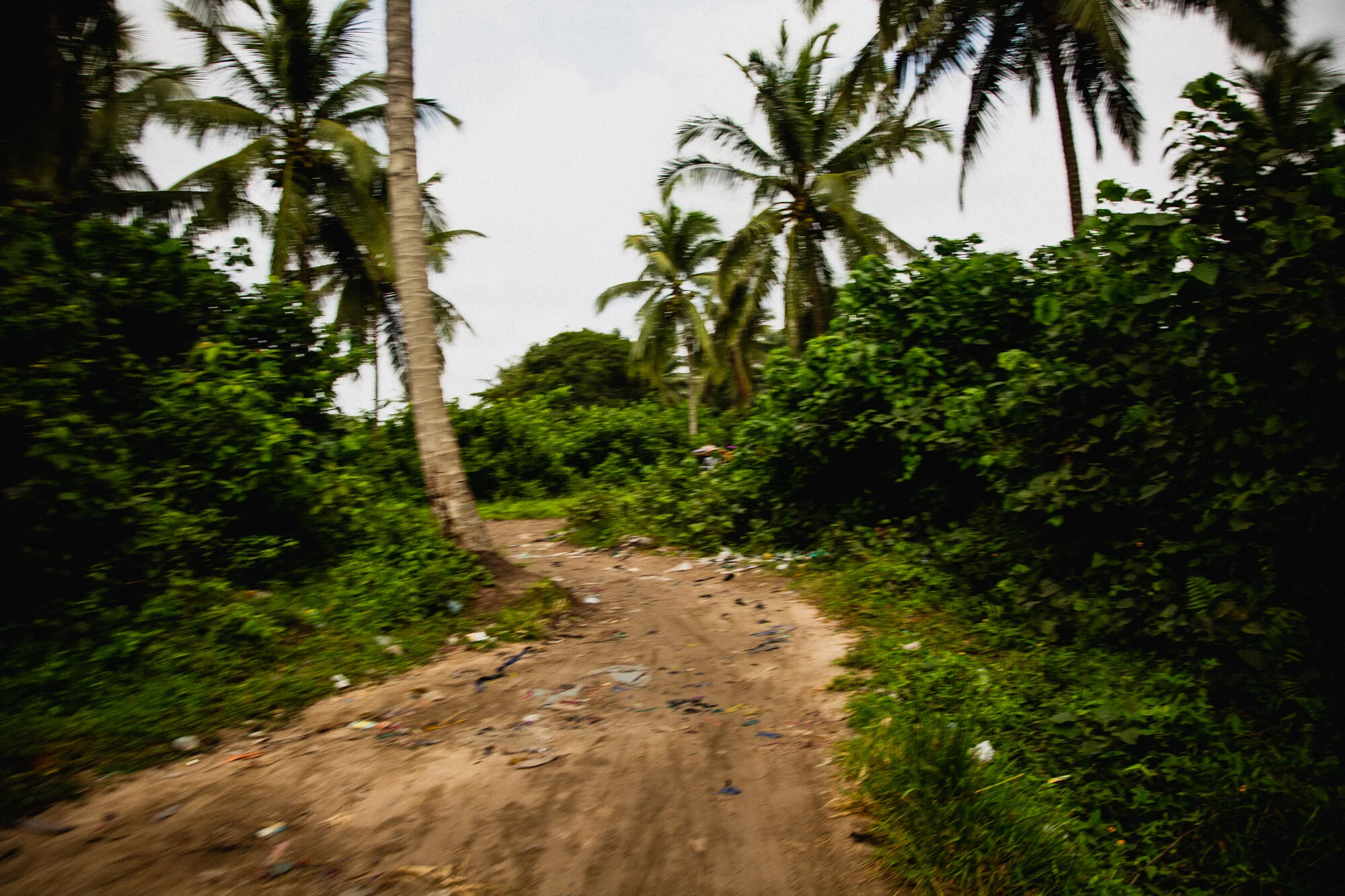
This portrait review the linking road between the Nigeria and Republic of Benin
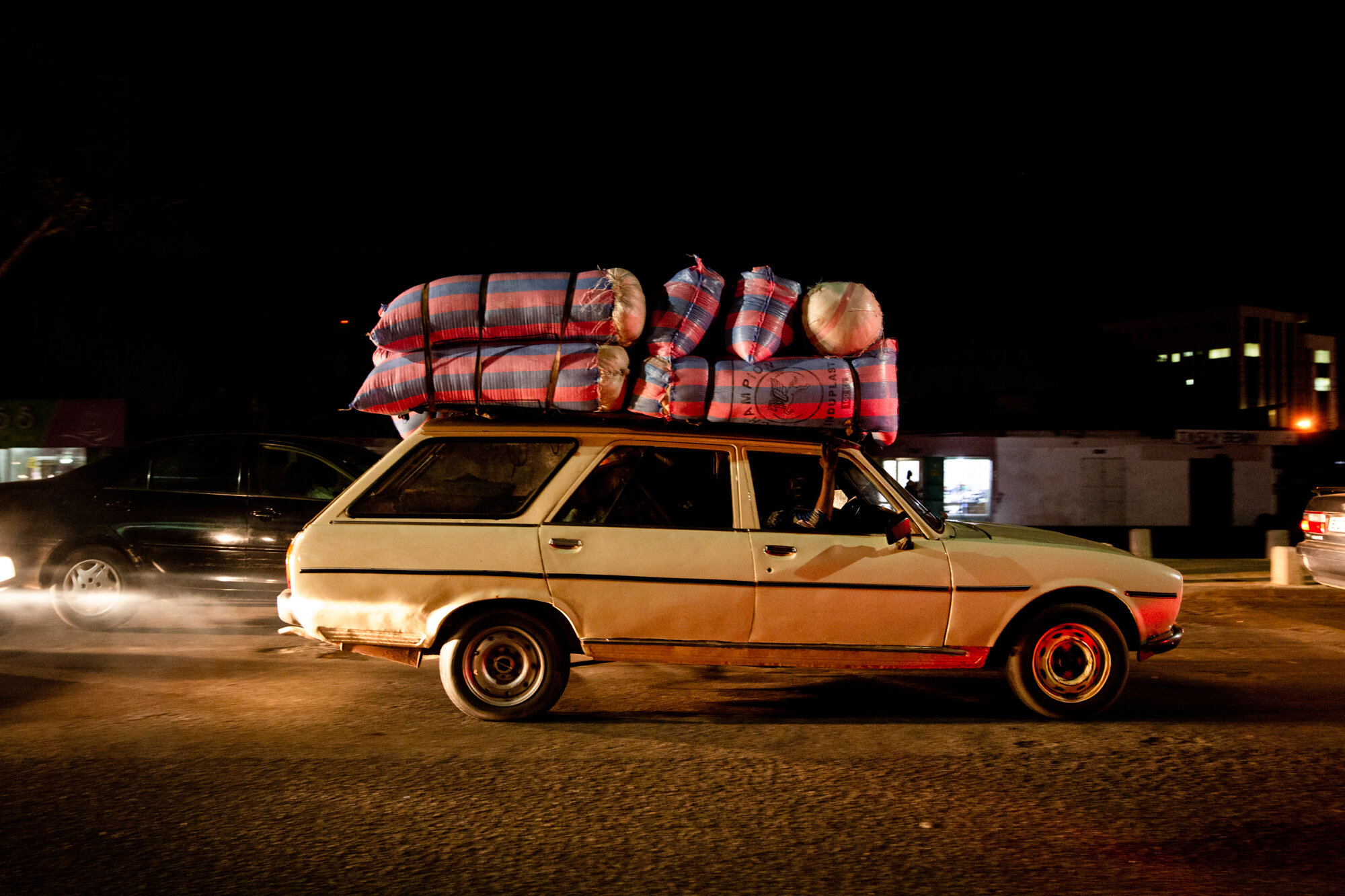
504 G wagon were mostly used in Republic of Benin to transport good from Seme Boarder to inner rural area of Benin
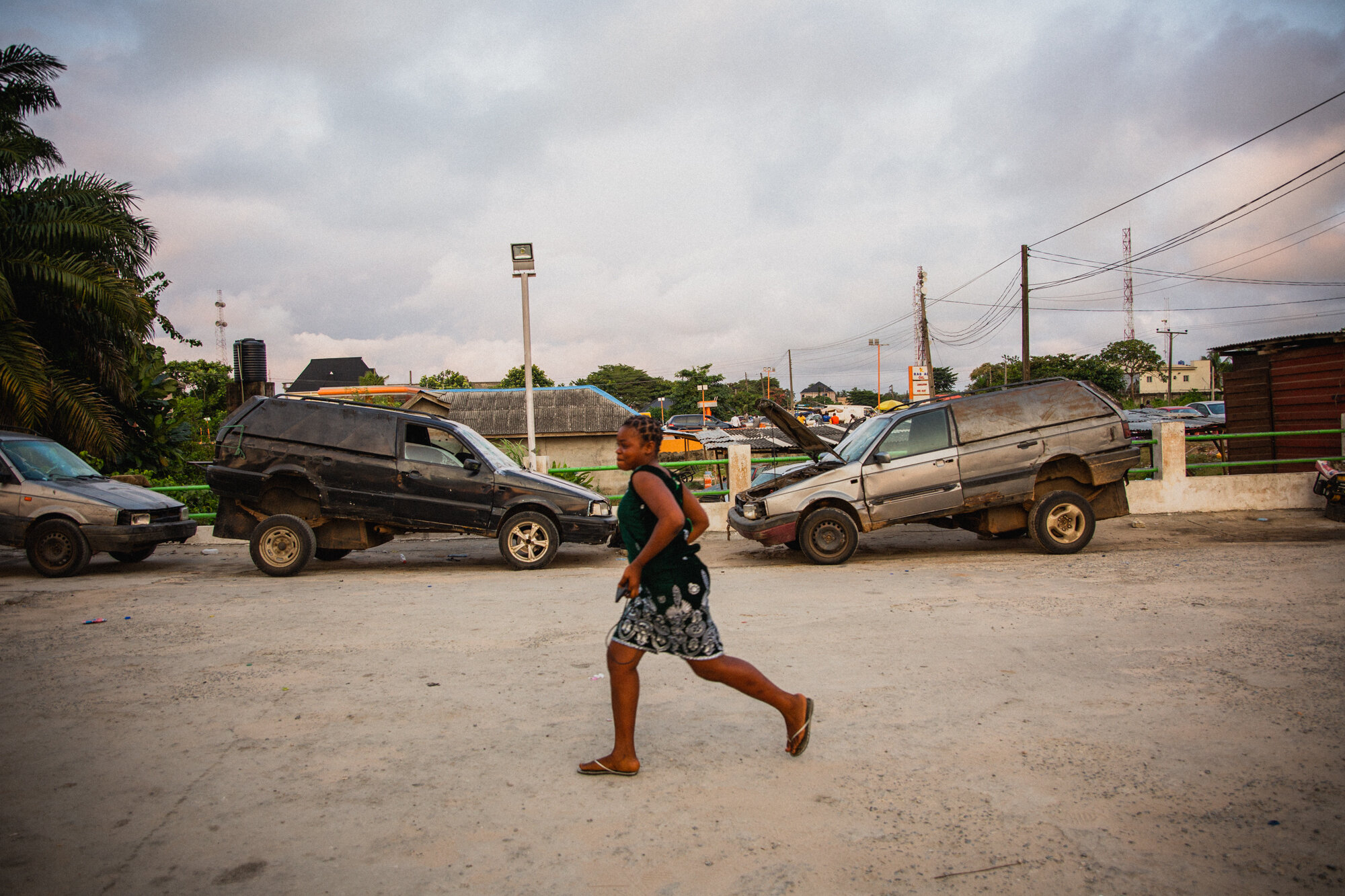
A passerby at the bus park
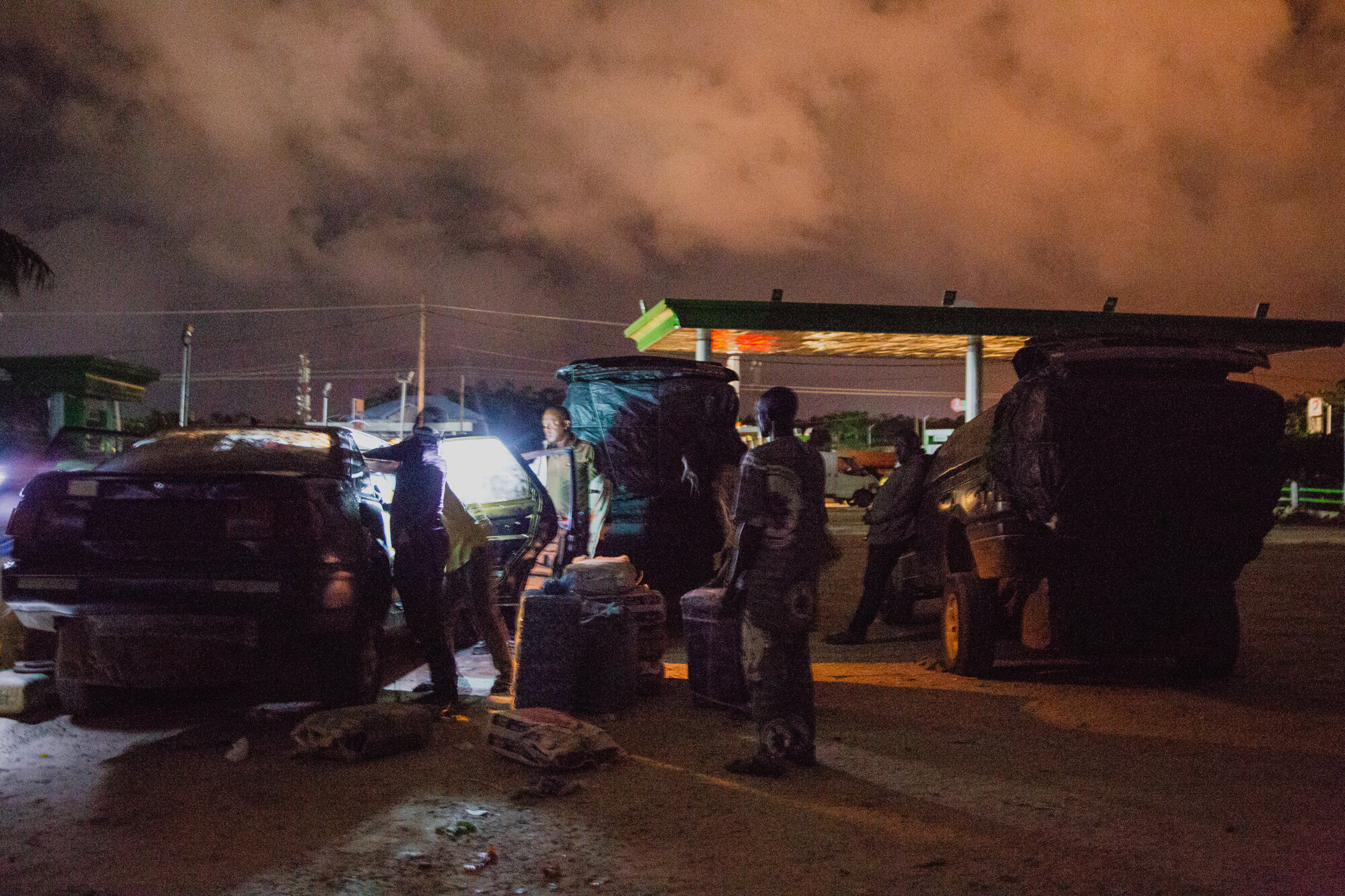
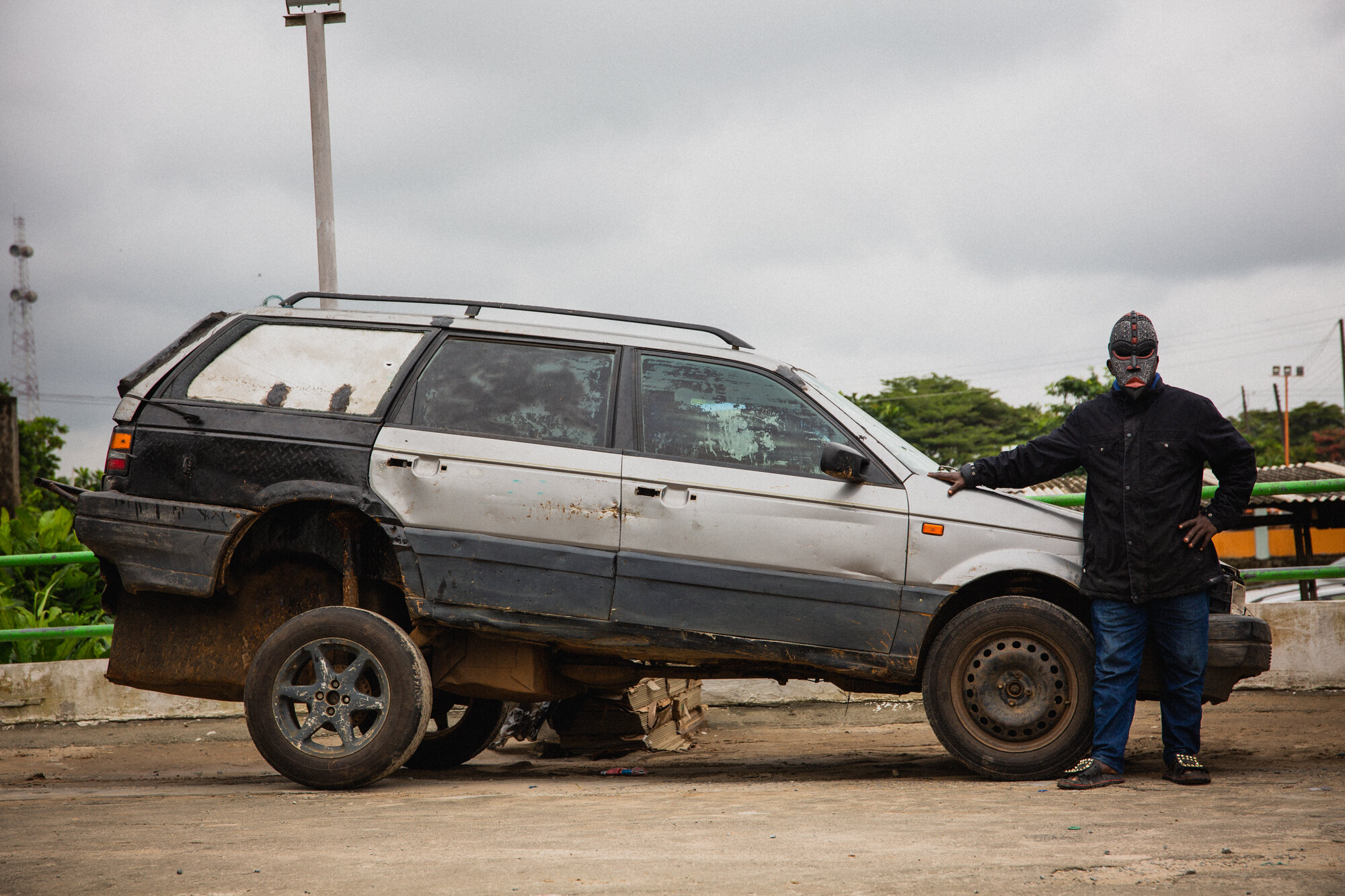
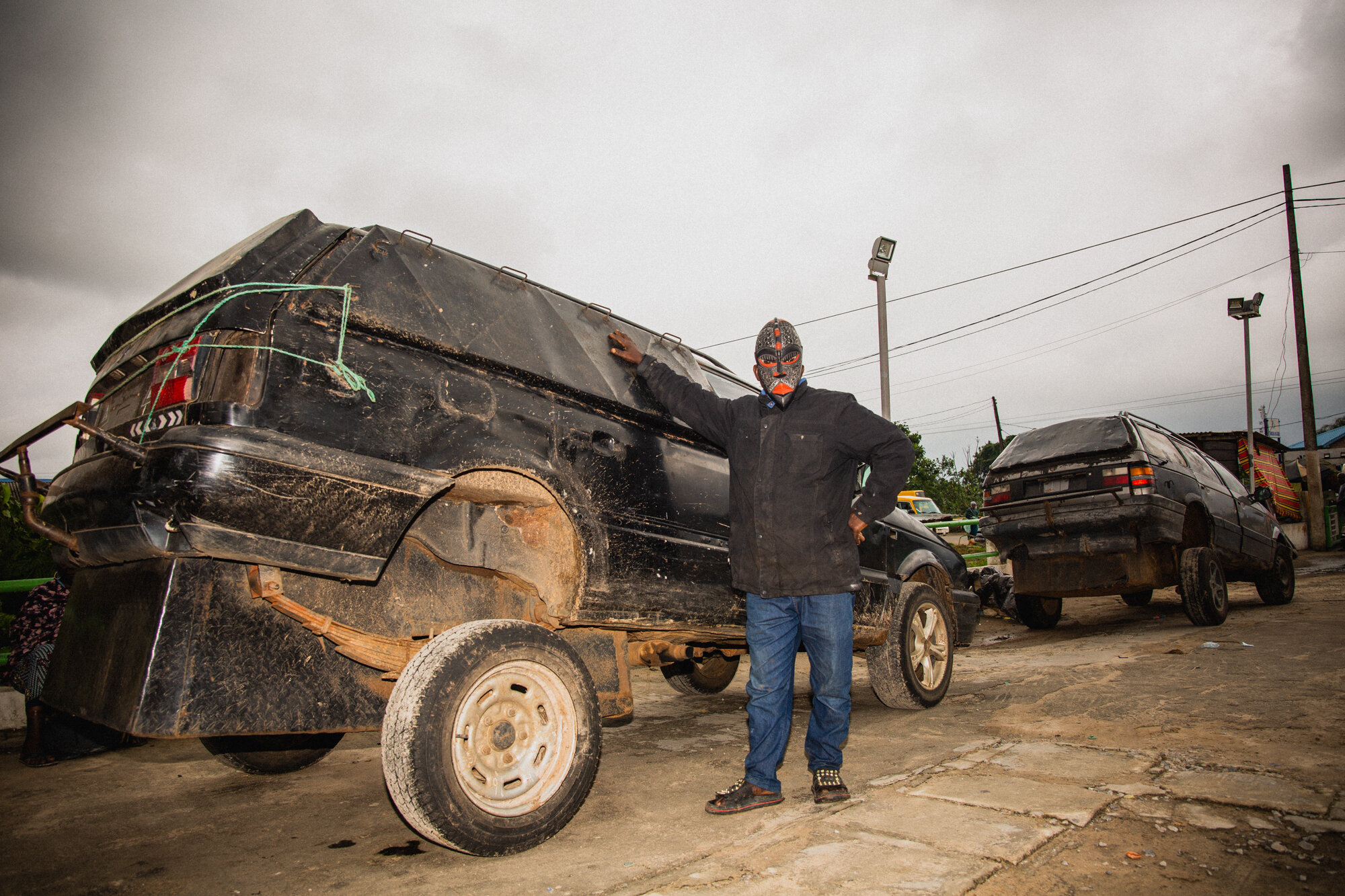
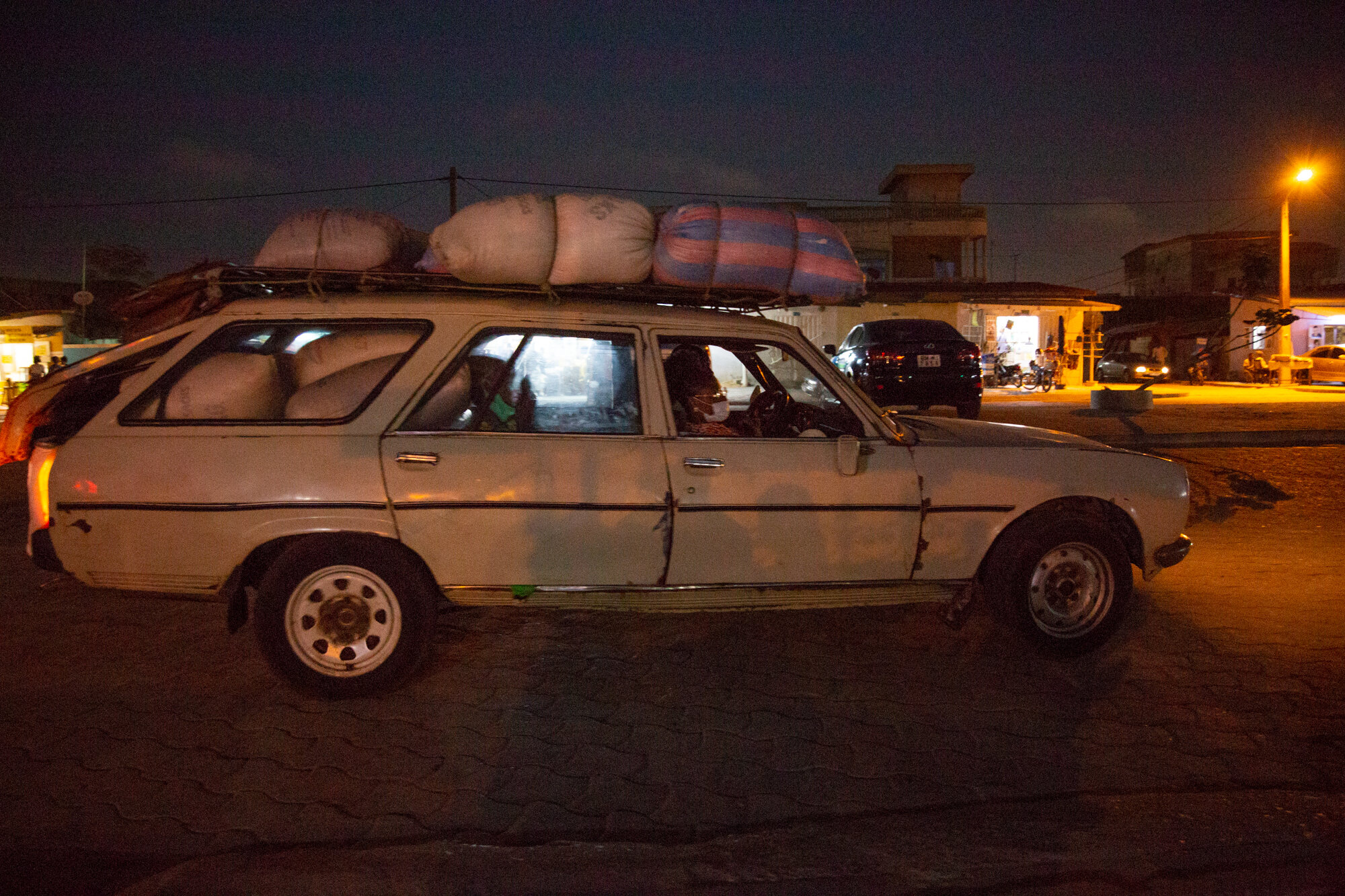
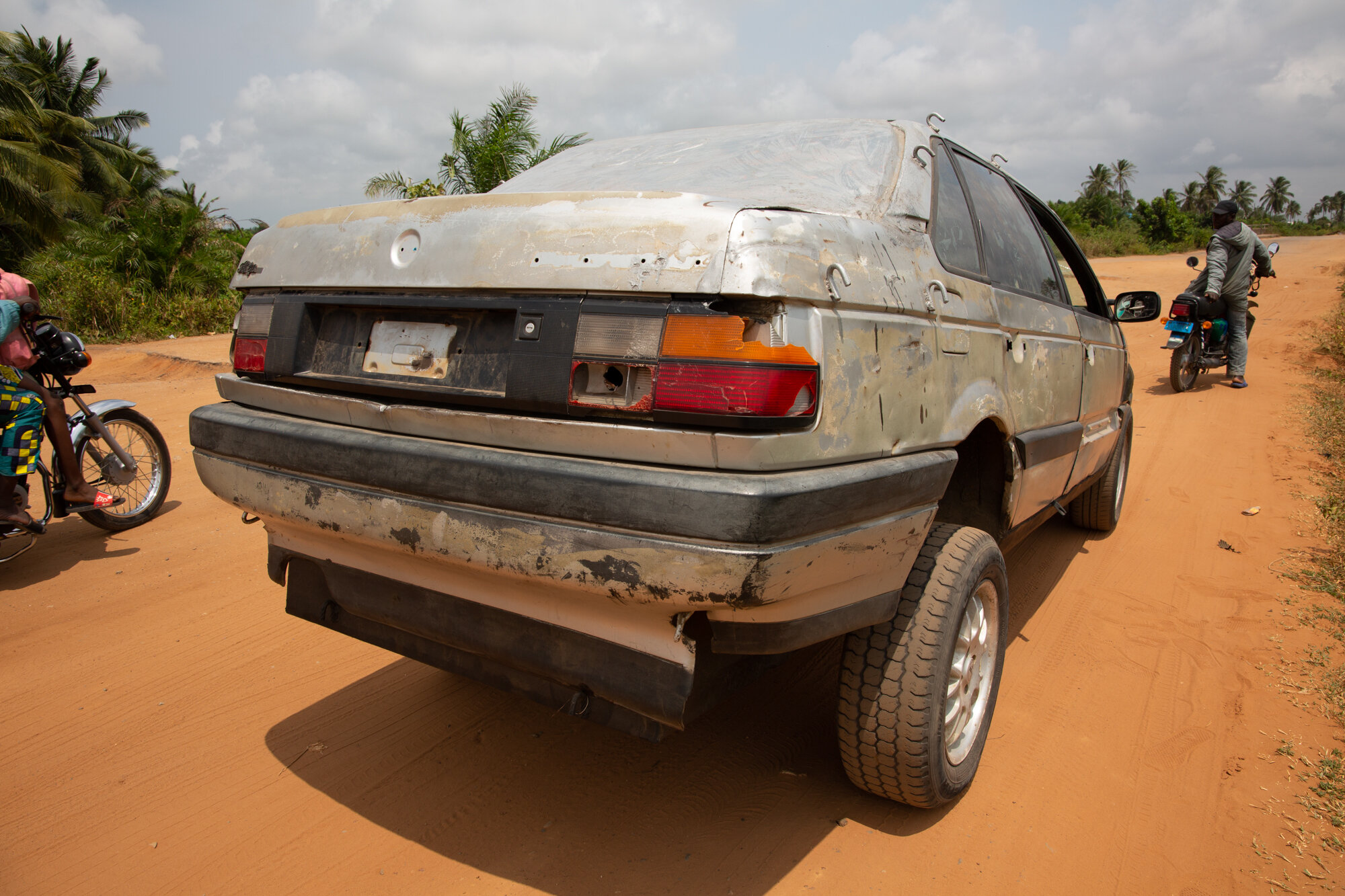
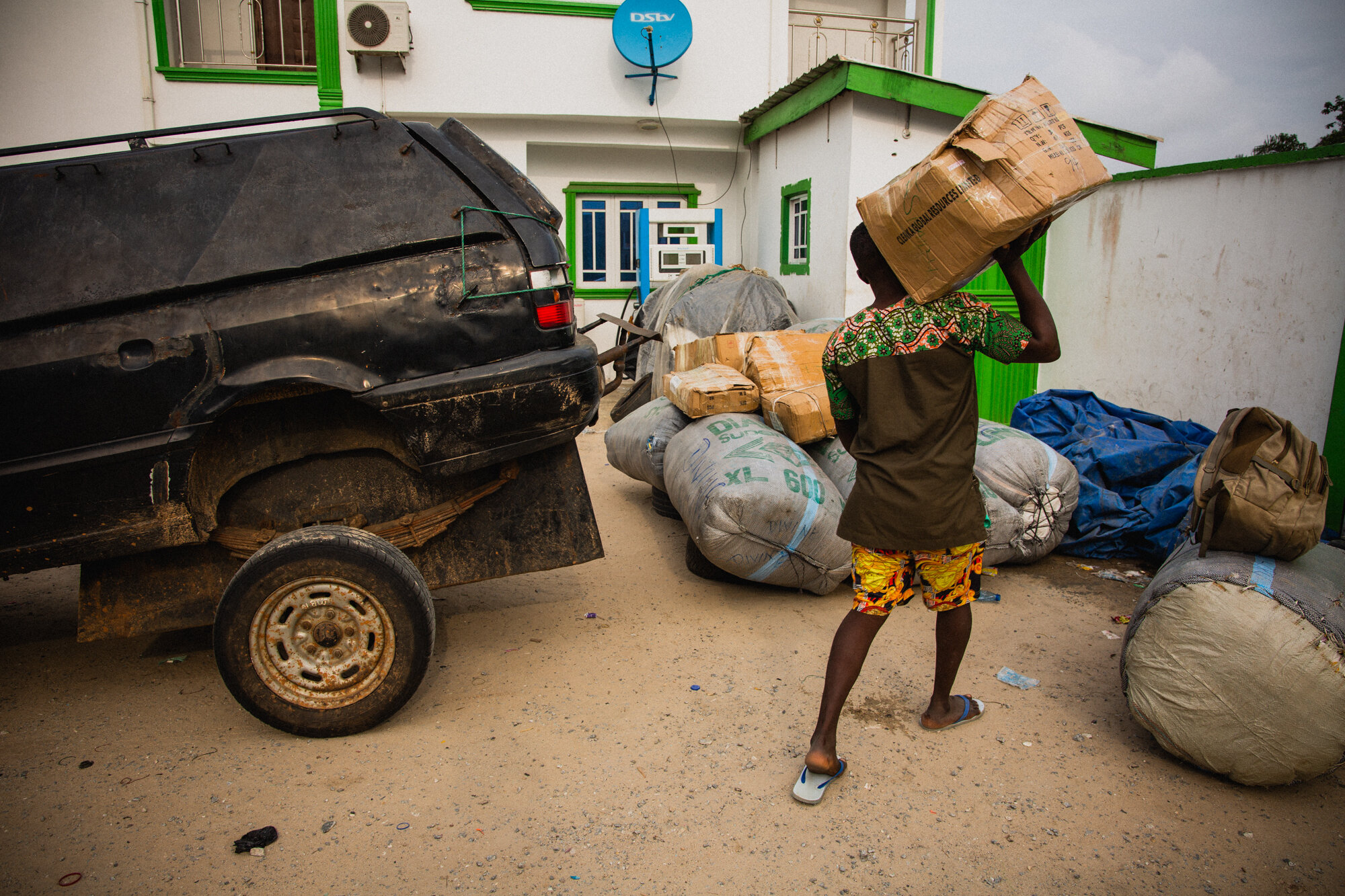
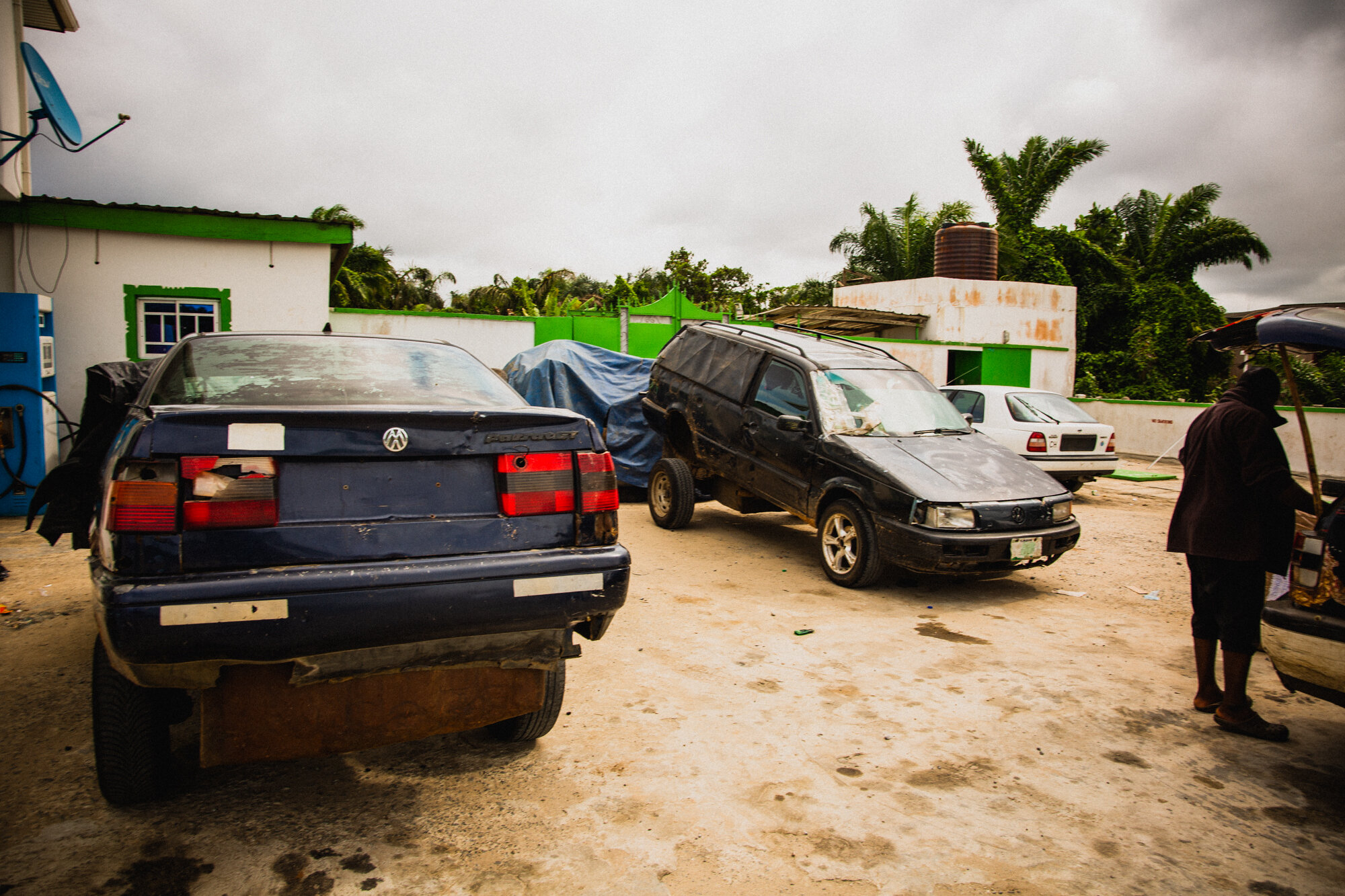
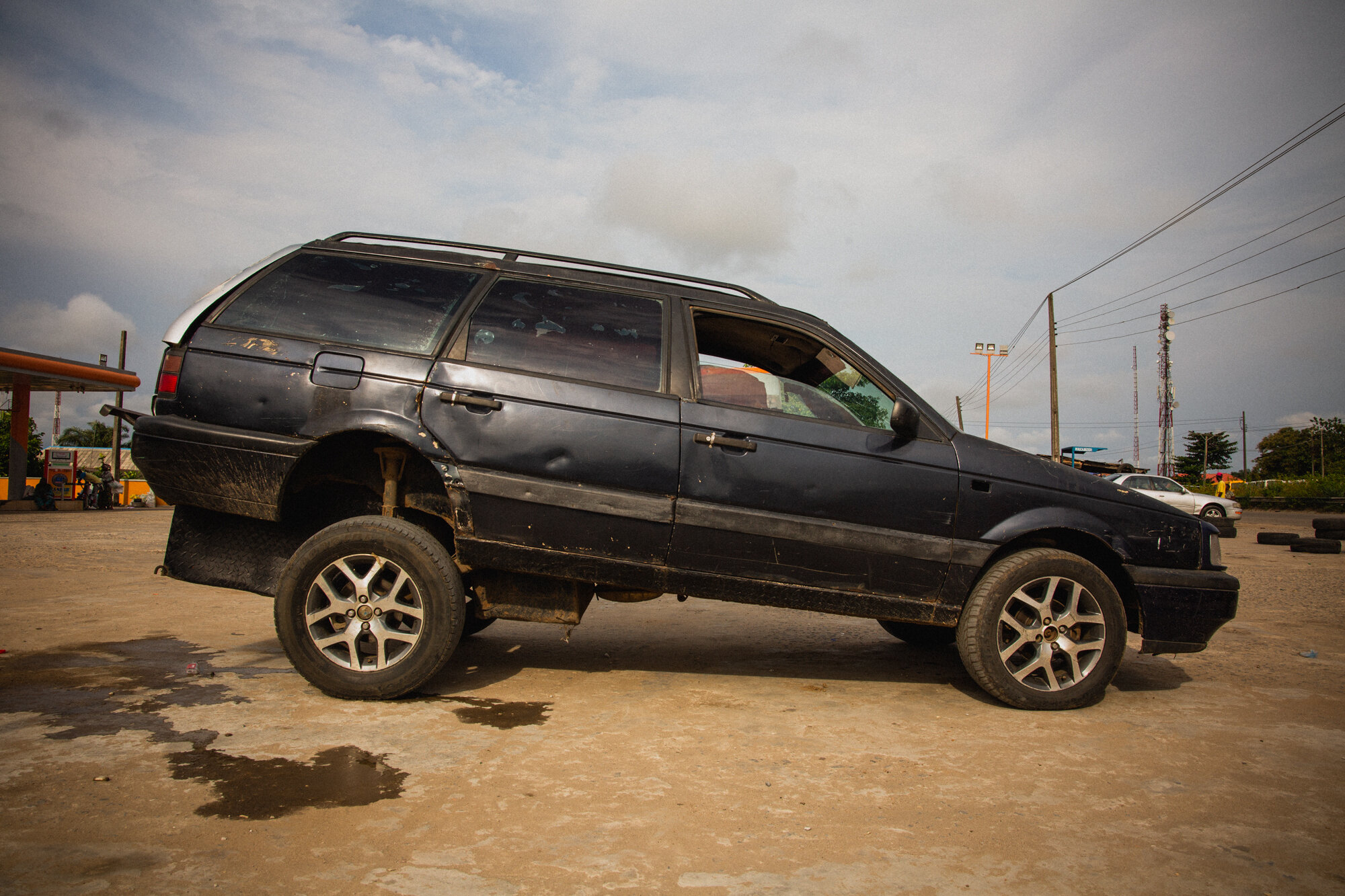
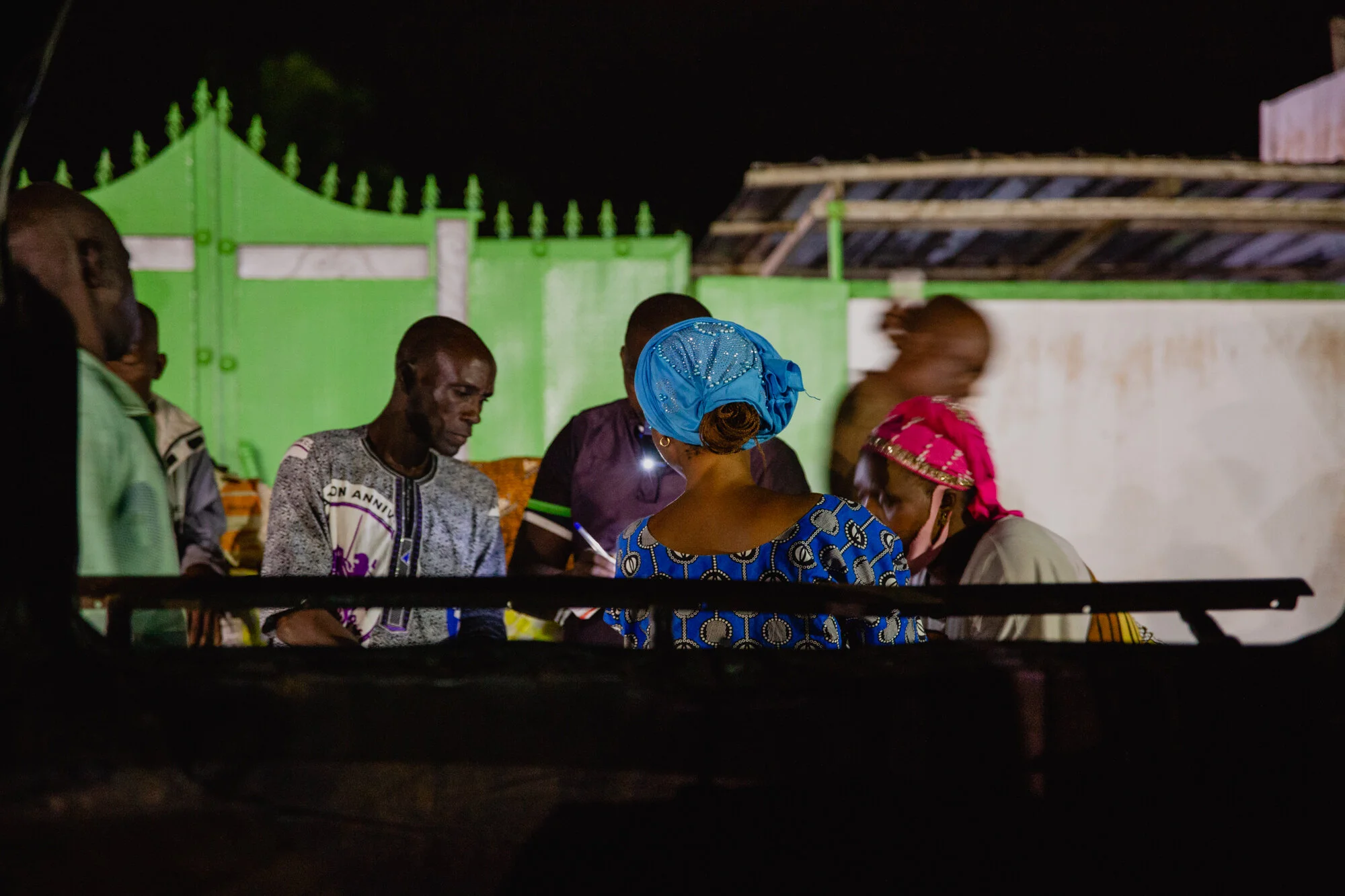




















On getting to see the theme of Bakanal de Afrique 2020, it resonated with my spirit immediately. Because transportation has always been a topic I really want to explore as a documentary photographer.
My work takes a look at transportation movements across Nigerian-Benin republic border with a focus on the vehicles that convey goods and services popularly known as “Fayawo” (meaning cars that use their chest to crawl), a Yoruba word to describe smuggling. Fayawo plays a major role in the movement of goods in and out of Nigeria and Benin.
Portraits of drivers illustrating how their unique designed vehicles are loaded. Traditional arts are used to cover the driver’s faces for reasons of anonymity. The aim of this project is to show the beauty and aesthetic form of these vehicles, which are specially re-designed by drivers to suit its course. Pointing out their structure, being able to carry heavy loads by raising the vehicle’s back up adds to their unique appearance. Ignoring the fact that these cross border movements might be illegal, the vehicle’s transformation contributes to a new form of transportation boosting economic growth and strengthening transcultural relationships.
Production Credits
Photographer- Adetona Omokanye
about the artist
Photographer
Lagos | Nigeria
Adetona Omokanye is a graduate of University of Lagos with Masters degree in Marine Pollution and Management. He’s a documentary photographer based in Lagos, Nigeria.
His work navigates and positions at the fore-intertwined relationship between beauty, self-acceptance, politics and environmental pollution.
He attended Foundry Photojournalism Workshop (Vll Academy) In Kigali, Rwanda (2019).
He also attended the Native Creative Lab (2018). Adetona is a member of African Photojournalism Database (APJD), a joint project by the World Press Photo Foundation and Everyday Africa. His works have been published in, magazines and websites such as Getty images, Der Spiegel, Business day, Frankfurter Rundschau, Eater and Weser kurier. Recently , one of his Personal projects-Beyond 4ft 10Inch, won a Getty Images award (2019).
In the pursuit of his career as a story teller , he strongly believes that photography can light up darkness and expose ignorance if a project were properly documented.
OTHER WORK FEATURED TODAY
